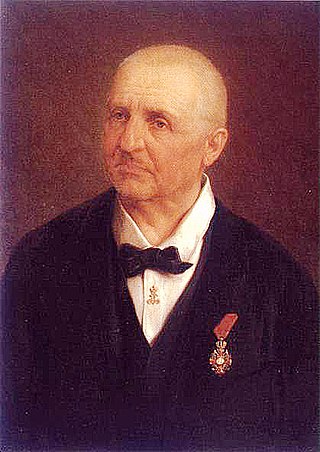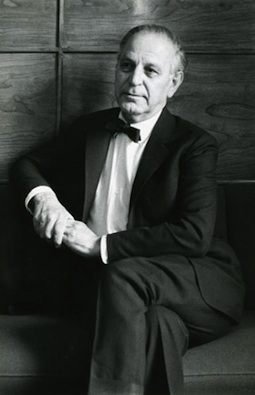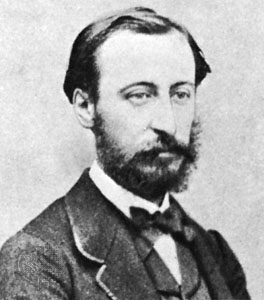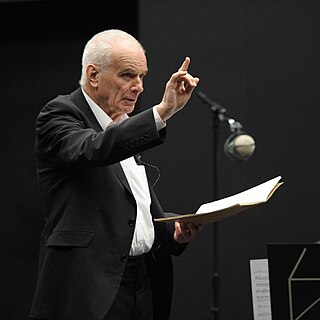Related Research Articles

Claudio Abbado was an Italian conductor who was one of the leading conductors of his generation. He served as music director of the La Scala opera house in Milan, principal conductor of the Berlin Philharmonic, principal conductor of the London Symphony Orchestra, principal guest conductor of the Chicago Symphony Orchestra, music director of the Vienna State Opera, founder and director of Lucerne Festival Orchestra, founder and director of Mahler Chamber Orchestra, founding Artistic Director of Orchestra Mozart and music director of European Union Youth Orchestra.

Music for Strings, Percussion and Celesta, Sz. 106, BB 114 is one of the best-known compositions by the Hungarian composer Béla Bartók. Commissioned by Paul Sacher to celebrate the tenth anniversary of the chamber orchestra Basler Kammerorchester, the score is dated September 7, 1936.

Anton Bruckner's Symphony No. 5 in B-flat major WAB 105, was written in 1875–1876, with minor changes over the next two years. It came at a time of trouble and disillusion for the composer: a lawsuit, from which he was exonerated, and a reduction in salary. Dedicated to Karl von Stremayr, education minister in the Austro-Hungarian Empire, the symphony has at times been nicknamed the "Tragic", the "Church of Faith" or the "Pizzicato"; Bruckner himself referred to it as the "Fantastic" without applying this or any other name formally.

Ulvi Cemal Erkin was a member of the pioneer group of symphonic composers in Turkey, born in the period 1904–1910, who later came to be called The Turkish Five. These composers set out the direction of music in the newly established Turkish Republic. These composers distinguished themselves with their use of Turkish folk music and modal elements in an entirely Western symphonic style.

The Piano Concerto No. 2 in G minor, Op. 22 by Camille Saint-Saëns was composed in 1868 and is probably Saint-Saëns' most popular piano concerto. It was dedicated to Madame A. de Villers. At the première on 13 May the composer was the soloist and Anton Rubinstein conducted the orchestra. Saint-Saëns wrote the concerto in three weeks and had very little time to prepare for the première; consequently, the piece was not initially successful. The capricious changes in style provoked Zygmunt Stojowski to quip that it "begins with Bach and ends with Offenbach."

Sir Edward Elgar's Symphony No. 1 in A♭ major, Op. 55 is one of his two completed symphonies. The first performance was given by the Hallé Orchestra conducted by Hans Richter in Manchester, England, on 3 December 1908. It was widely known that Elgar had been planning a symphony for more than ten years, and the announcement that he had finally completed it aroused enormous interest. The critical reception was enthusiastic, and the public response unprecedented. The symphony achieved what The Musical Times described as "immediate and phenomenal success", with a hundred performances in Britain, continental Europe and America within just over a year of its première.
John Williams composed The Five Sacred Trees for Judith LeClair, the principal bassoonist of the New York Philharmonic in 1995, to honor the orchestra's 150th anniversary. The first performance was given by LeClair and the New York Philharmonic under Kurt Masur on April 12 of that year. The orchestra consists of three flutes and piccolo, two oboes and English horn, two clarinets and bass clarinet, two bassoons and contrabassoon, four horns, three trumpets, three trombones and tuba, timpani, harp, piano, celesta, and strings. Performance time is approximately 26 minutes. Inspiration for the work also comes from the writings of British poet and novelist Robert Graves.
The Symphony No. 2 in D-flat major, Opus 30, W45, "Romantic", was written by Howard Hanson on commission from Serge Koussevitzky for the 50th anniversary of the Boston Symphony Orchestra in 1930, and published by Carl Fischer Music.
Felix Mendelssohn wrote thirteen string symphonies between 1821 and 1823, when he was between 12 and 14 years old.. These symphonies were tributes to Classical symphonies especially by Joseph Haydn, Johann Christian Bach, Carl Philipp Emanuel Bach, and Wolfgang Amadeus Mozart.

The Symphony No. 3 by Peter Maxwell Davies was composed in 1984 on a commission from the BBC Philharmonic, who gave the world premiere on 19 February 1985, at the Free Trade Hall in Manchester, with Edward Downes conducting.

Symphony No. 6 is an orchestral work by Carlos Chávez, composed in 1961–62.
Symphony on a Hymn Tune is a four-movement orchestral composition by the American composer Virgil Thomson. The work was Thomson's first symphony and was composed between 1926 and 1928 while Thomson studied with the composer Nadia Boulanger in Paris. However, the work was not premiered until February 22, 1945, with Thomson leading the Philharmonic Symphony Society in New York City.
Symphony No. 50, Op. 360, Mount St. Helens is a three-movement orchestral composition by the American composer Alan Hovhaness. The symphony was commissioned by former Hovhaness publisher C.F. Peters and was completed January 24, 1982. It premiered March 2, 1984, and was performed by the San Jose Symphony under conductor George Cleve. The piece commemorates the volcano Mount St. Helens, culminating in the events of its 1980 eruption, which Hovhaness had witnessed from his Seattle home.
Pinturas de Tamayo is an orchestral composition in five movements by the American composer Steven Stucky. The work was commissioned by the Chicago Symphony Orchestra, who premiered the work on March 28, 1996, under the conductor Michael Gielen in Symphony Center, Chicago. The piece is inspired by the paintings of the Mexican artist Rufino Tamayo.
Concerto Fantastique is an orchestral composition in four movements by the American composer Ralph Shapey. The work was commissioned by the Chicago Symphony Orchestra, who first performed the work under the composer on November 21, 1991. It was a finalist for the 1992 Pulitzer Prize for Music.
The Symphonia: sum fluxae pretium spei is an orchestral triptych by the American composer Elliott Carter. Its three movements were composed between 1993 and 1995. The complete work was first performed on April 25, 1998 at Bridgewater Hall, Manchester by the BBC Symphony Orchestra under the conductor Oliver Knussen. The second movement "Adagio tenebroso" was a finalist for the 1996 Pulitzer Prize for Music.

Old and Lost Rivers is a short orchestral composition by the American composer Tobias Picker.
Quickening is a cantata for countertenor, two tenors, two baritones, children's choir, chorus, and orchestra by the Scottish composer James MacMillan. The work was co-commissioned by The Proms and the Philadelphia Orchestra and was completed in 1998. Its world premiere was performed by the Hilliard Ensemble, the BBC Symphony Orchestra & Chorus, and the Westminster Cathedral Boys' Choir under the direction of Andrew Davis at Royal Albert Hall, London, on 5 September 1999. The journalist Damian Thompson of The Spectator described it as "one of MacMillan's masterpieces."
The Symphony No. 3 is a composition for orchestra by the American composer Ned Rorem. The work was first performed by the New York Philharmonic under the direction of Leonard Bernstein at Carnegie Hall on April 16, 1959.
The Concerto for Piano and Orchestra is a musical composition by the American composer Aaron Copland. The work was commissioned by the conductor Serge Koussevitzky who was then music director of the Boston Symphony Orchestra. It was first performed on January 28, 1927, by the Boston Symphony Orchestra conducted by Koussevitzky with the composer himself as the soloist. The piece is dedicated to Copland's patron Alma Morgenthau Wertheim.
References
- 1 2 Rhein, John von (February 3, 1991). "Howard Hanson: Symphony No. 3, Symphony No. 6, "Fantasy Variations on a Theme of Youth"". Chicago Tribune . Retrieved February 21, 2016.
- ↑ Achenbach, Andrew (September 1998). "Music of Howard Hanson - Volume 1". Gramophone . Retrieved February 21, 2016.